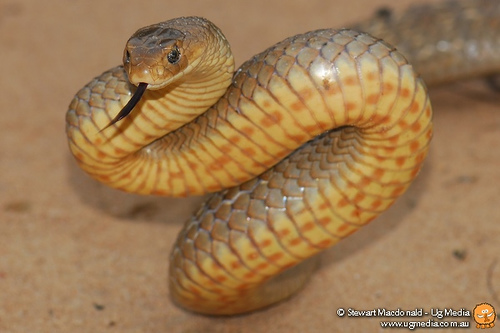
Adaptation
The eastern brown snake is an extremely well
adapted organism. Its body structure allows it to
squeeze through many small places. The snakes rely on
mostly the olfactory glands, and especially a
specialized grove on the roof of the snake’s mouth
called the Jacobson’s organ. This groove is designed for
the snake to analyze chemicals taken in by its tongue
from the surroundings. The Jacobson’s organ is used for
catching prey, because the snake’s eyes are not very
good at seeing objects and are more for seeing movement.
This snake has a very small head to body ratio
compared to most snakes, its head and neck region are
very similar in size. It has a very complex respiratory
system as well. It is composed of one lung being much larger than the
other and the heart having three chambers for the
assurance that as much blood as possible is being
enriched with oxygen before being pumped out of the
heart.